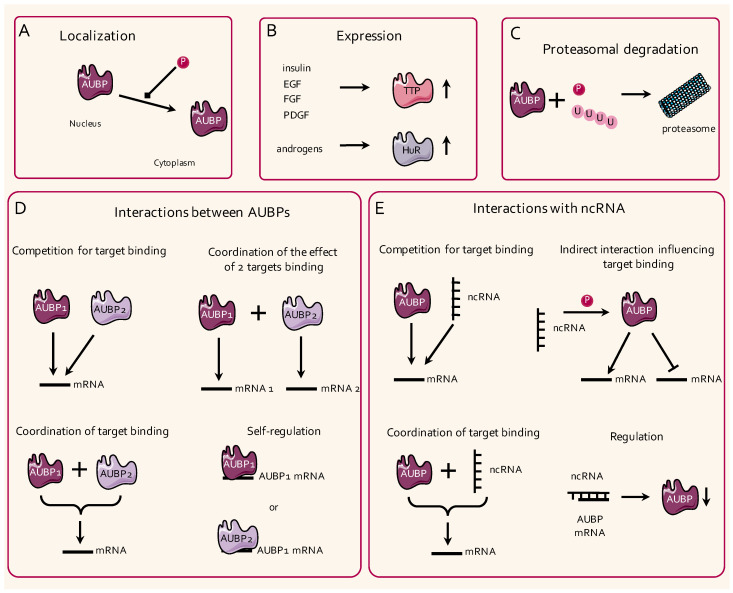Figure 4.
Regulatory mechanisms of the activity of AUBPs. (A) The localization and shuttling of AUBPs between the nucleus and the cytoplasm can be regulated by phosphorylation events. (B) The expression of AUBPs, such as TTP or HuR, is regulated by growth factors (e.g., insulin, epidermal growth factor (EGF), fibroblast growth factor (FGF), and platelet-derived growth factor (PDGF)) and androgens, respectively. (C) AUBPs can be targeted for proteasomal degradation by phosphorylation and/or ubiquitination. (D) AUBPs can compete for binding to the same mRNA (upper left panel) or can influence their respective binding to different or to the same target mRNAs (upper right and lower left panels). AUBPs can finally regulate the lifetime of their own mRNAs and of the RNAs of other AUBPs (lower right panel). (E) AUBPs and non-coding RNAs (ncRNAs) can compete or coordinate each other’s binding to a target mRNA (upper and lower left panels). ncRNAs can also indirectly influence the binding of AUBPs to their respective targets through intermediate mechanisms (e.g., phosphorylation events; upper right panel). Finally, ncRNAs can bind to the mRNAs of AUBPs and can regulate their protein expression levels (lower right panel).

